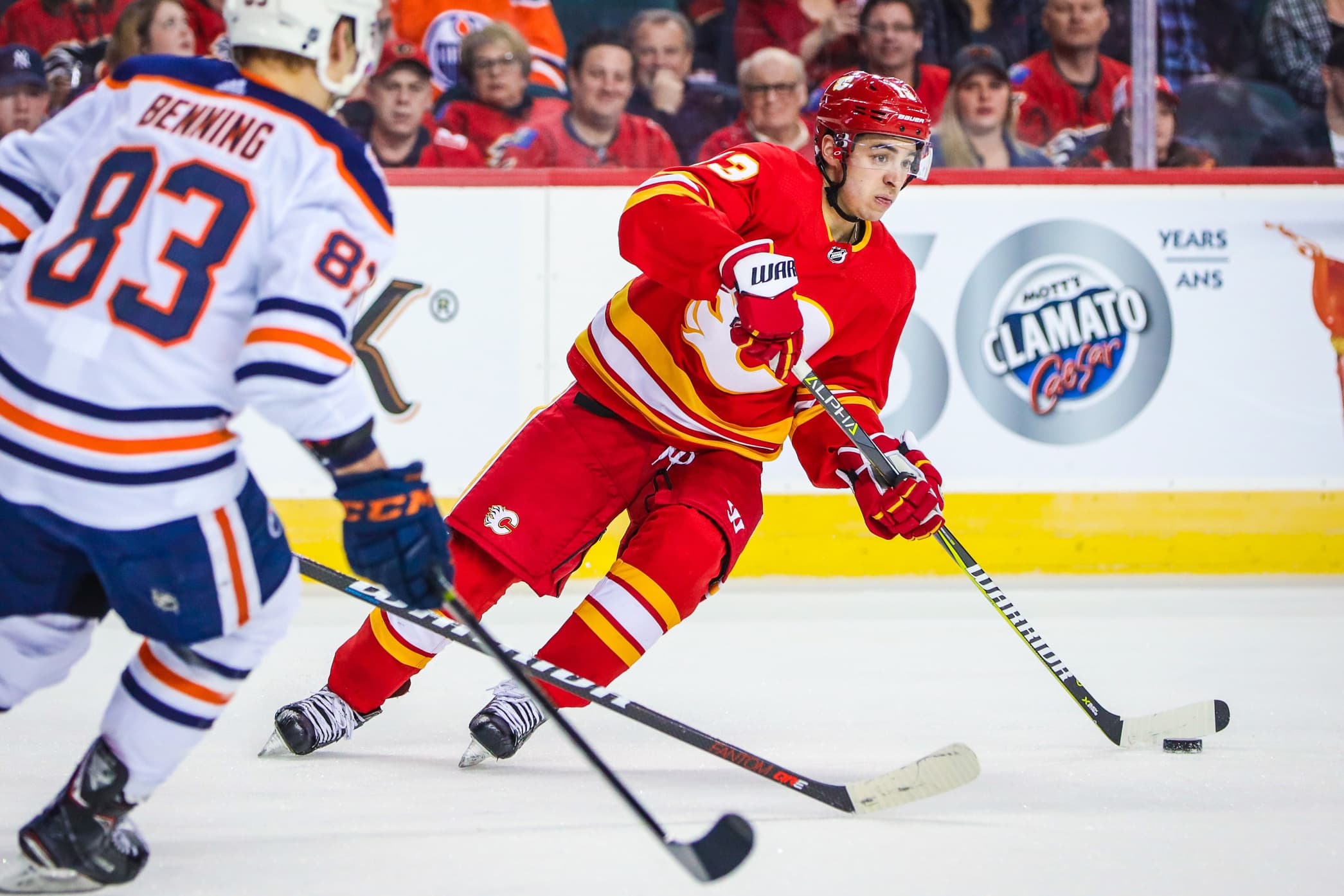Nation Sites
The Nation Network
FlamesNation has no direct affiliation to the Calgary Flames, Calgary Sports and Entertainment, NHL, or NHLPA
FlamesNation player evaluation: Johnny Gaudreau

Photo credit: Sergei Belski/USA Today Sports
For the fifth consecutive season, Calgary Flames forward Johnny Gaudreau was one of the smallest human beings playing in the National Hockey League. For the second consecutive season, he was one of the most dangerous offensive players in the game.
2018-19 season summary
If you want to be glib, the 2018-19 campaign was the most Johnny Gaudreau season that Gaudreau has ever played.
Games played | Goals | Assists | Points | TOI/GP | 5v5 CF% | 5v5 CF% rel | OZS% | PDO |
82 | 36 | 63 | 99 | 20:04 | 54.49 | +0.97 | 60.55 | 1.011 |
Gaudreau spent the entire season on the first line and top power play unit – I think we’re at the point now where the term “first line” is shorthand for “whatever line Gaudreau is on,” similar to how things were when Jarome Iginla played for the team. With the departure of Micheal Ferland, Elias Lindholm was the primary right wing on Gaudreau’s line with Sean Monahan, though James Neal, Matthew Tkachuk and Derek Ryan got cups of coffee with the top line.
Offensively, Gaudreau had a monstrous year. He played every game, set a career high for five-on-five ice time, and set career highs in five-on-five goals, primary assists, points, shots, scoring chances, high-danger chances. He also set a new career high in penalties drawn, something he was already considered excellent at.
In terms of rates, Gaudreau led the team in high-danger chances per 60 minutes and was among the team’s leaders in shot attempts, shots and scoring chances. Defensively, Gaudreau was in the bottom third rates-wise compared to the rest of the regular forwards but that was an improvement on prior seasons – and let’s be honest, defensive prowess isn’t exactly why he’s getting paid the big bucks.
The reason behind Gaudreau’s success could be Lindholm. Renowned for his two-way play, the thought process behind plunking the Swede on the top line was likely that he could take some draws on the right side and help with the defensive side of the game. Lindholm’s back-checking seemed to fire up Gaudreau’s competitive side, so he back-checked more, too, and Lindholm’s underrated scoring touch helped the line bury their chances. For a few reasons, Gaudreau’s trio had the puck a lot more than they had in the past and it really helped them become a scary-good line for 75% of the season.
The oodles of ice time early on seemed to wear down Gaudreau’s line late in the season – more Monahan than him, if we’re being honest – and his productive tailed off late in the season and into the post-season. But let’s not let that rain on the parade: the smallest offensive player on the team had 99 points.
Compared to last season
The top line was used basically the same way they were in 2017-18, except they swapped out Ferland for Lindholm. Their offensive rates dipped ever-so-slightly, but Gaudreau enjoyed the best defensive rates he’s ever had as a pro. The top line was much better at puck management, had the puck more in the offensive zone, and found ways to bury their chances.
The result was a jump of 12 goals and 15 points for Gaudreau for the season.
What about next season?
Gaudreau will be 26 years old when the 2019-20 season begins, and will have three seasons remaining with a $6.75 million cap hit. So far, he’s been a bargain at that AAV based on his production. Considering his primary linemates are going to be 24 and 25, it’s not unreasonable to expect his high-end offensive production to continue.
The challenge may be to figure out how to keep the top trio fresh enough to have some gas in the tank for the end of the season; it’s natural to be tempted to lean on your best players when they’re playing really well, but Bill Peters’ tendency to rely on his best players may need to be resisted a bit for longer-term gains.
2018-19 player evaluations
Breaking News
- Flames Prospect Roundup: How the standings shape up entering the holiday break
- NHL Notebook: Sidney Crosby takes sole possession of most points in Penguins’ franchise history
- FlamesNation Mailbag: Waiting for Santa with reader questions
- Flames injury news: positive signs for Martin Pospisil
- Recap: Martin Frk leads Wranglers to memorable Winter Wranglerfest win in more ways than one
